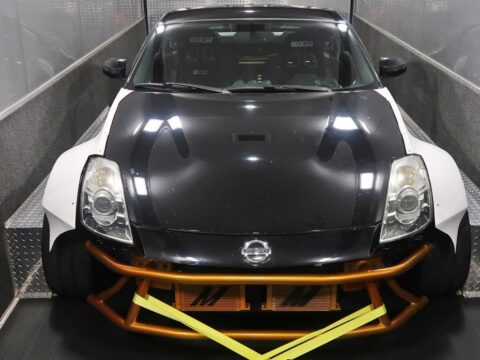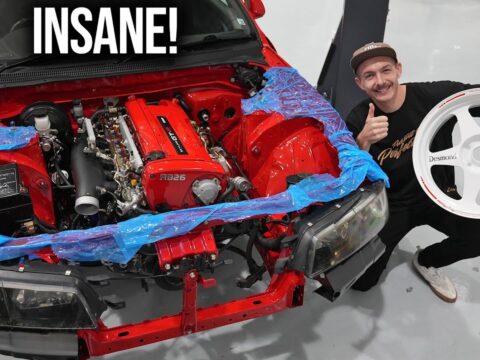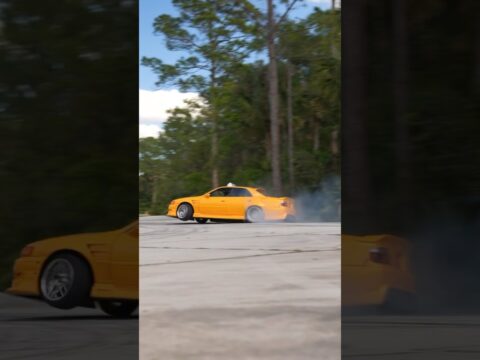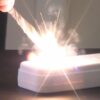Next show will be October 9, 2013 at 7pm EST
In this show we talked about automotive myths. It started as a forum post on my website and turned into this show. Now there were some technical difficulties during the program, sorry about that. We did however cover some of the most popular automotive myths that I’ve heard of. So I guess you could say, “mission accomplished”.
I saw many people posting their automotive questions to the hang out. Because of that, I think we’ll go back to answering questions in the next show. Hope to see you there!
Here’s some useful links for you.
Nitrogen Tires: http://www.youtube.com/watch?v=knHeUF9JLzg
Octane ratings: http://www.youtube.com/watch?v=8VWEwEveGTQ
Basic parts of a transmission Part 1: http://www.youtube.com/watch?v=JGbsgpp2YJQ
Basic parts of a transmission Part 2: http://www.youtube.com/watch?v=0Qf6O0oAs7U
Discussion about this video: http://www.ericthecarguy.com/kunena/18-The-EricTheCarGuy-Video-Forum/47306-ericthecarguy-talks-automotive-myths-live-9-25#73824
Visit me at: http://www.ericthecarguy.com
Facebook: https://www.facebook.com/EricTheCarGuy?fref=ts
Twitter: https://twitter.com/EricTheCarGuy
Google+: https://plus.google.com/100195180196698058780/posts
Information on Premium Membership: https://www.ericthecarguy.com/premium-content-streaming-etcg-content
Stay Dirty
ETCG
Due to factors beyond the control of EricTheCarGuy, it cannot guarantee against unauthorized modifications of this information, or improper use of this information. EricTheCarGuy assumes no liability for property damage or injury incurred as a result of any of the information contained in this video. EricTheCarGuy recommends safe practices when working with power tools, automotive lifts, lifting tools, jack stands, electrical equipment, blunt instruments, chemicals, lubricants, or any other tools or equipment seen or implied in this video. Due to factors beyond the control of EricTheCarGuy, no information contained in this video shall create any express or implied warranty or guarantee of any particular result. Any injury, damage or loss that may result from improper use of these tools, equipment, or the information contained in this video is the sole responsibility of the user and not EricTheCarGuy.















![suspect for fraud in the 6th District [VIDEO] – Blotter](https://avnblogfeed.com/wp-content/uploads/2024/04/Fraud-6xx-N-11th-St-DC-24-06-003505-100x100.jpg)





Larger tires make vehicle move slower for speed and smaller tires make speed faster because the revolution is faster from top to bottom
You cut out at nitrogen in tires
I have done the reverse to drive reverse to drive to get unstuck from mudd
Great idea on live chat this reminds me of scotty kilmers live chat
How come you don't do the live streams anymore?
This might be a double post, but it's actually not nitrogen that causes the sky to appear blue. It's ozon, because this gas absorbs yellow/orange light 😉
Nygeron is good don’t need to top off the air. For like a year but not worth the money.
I started breathing more when you said that 80 of the air is not oxygen
yes he is stoned
so smart
different tire sizes MATTER, it also has to do with braking and handling, I believe its the smaller tire that will stop faster and cause a pull
blow-by is actually unburned fuel getting past the rings and going into the crankcase and then venting out. My C7 CAT diesel had the samething bad pistons with excessive blow-by out of the breather tube. all the same, unburned petrol in crankcase….and I have put nitrogen in my tires and it actually does work, I never had to fill my tires, with regular air I always have to check and fill them, stopped using nitrogen because I was getting nails and screw flats.
Batteries in the 20s and 30s were in wooden boxes.This is where the myth began.
oatmeal and corn flour works for leaking rads
9:54 sorry eric you are wrong about the sky
http://spaceplace.nasa.gov/blue-sky/en/
You need to do more of these. Informative, entertaining, and hand to forehead all at the same time. Thanks.
Oxygen makes the sky blue, just saying.
The manual transmission syncro myth probably comes from the old 4 speed truck transmissions with 1st being the granny gear. That was more of an optional utility gear and there were no syncros between 1st and 2nd with those. They were designed to start in 2nd gear under normal driving conditions. If your brakes failed, you could bring the truck to a stop by double clutching and dropping into 1st.
Nitrogen is actually used so the tire pressure doesn't increase or decrease with temperature. That's the only reason. It just makes tires keep their pressure more consistently in changing temperatures.
Interesting thing is that you guys in US have lot lower octane fuel. Here I haven't seen lower octane than 91. Most cars run on 95 octane (like 95% of cars). There is 98 octane fuel too, but that was used back in the day, no new car today uses it here as far as I know.
I've tried the gg thing, and it does work. You can see the egg white come out of the leak hole. But if you do this in an old car only use the egg white, not the yolk.
wont the faster speed (more friction, more combustion, more heat) cancel out the fact that theres more coolant flowing? Wont the tstat regulate the flow and keep the engine so hot (idk exact temps) as to keep fuel consumption down?
Tiff O'Neil?? You mean Tiff Needell?
My dad has the same shirt lol
cold ground draws power from battery why military motorpool chew you outl
Nitrogen is much more stable to temperature differences and contains less moisture than normal air. It's a must on all aircraft. – A&P.
In sweden we only have diesel 95 and 98 octane for environmental reasons IE the fuel burns more efficiently at higher compression which should result in cleaner exhaust and not as much deposits in the engine.
On the subject of nitrogene in tyres. If you have an de moisturizer on teh air compressor that will basically do the same as filling them with pure nitrogen. It's the different expansion coefficients of water and air you you are trying to eliminate. At least that's what I heard. His name is Tiff Needell if anyone is looking for the video.
Up to the 70's, America cars had what was called a Blow-by tube and was replaced by the invention of the PCV valve, plus the oil caps were filled with a hair like material.
When gas had lead in it, it made a difference between Ethyl or Regular on preformance.
The battery on the floor came about from the materials used to case them up to the 70's. when they went to the new materials it stopped. Now days it's the PARASITIC DRAW from dirt forming on the top that will drain a battery in weeks of setting dormant. Also the computer memory & clock in the radios will discharge one.
I stared at the monster sitting on the back the whole time.
Eric, thank you for your explanation of premium vs regular grades of gasoline.
Your explanation is the clearest and most informative that I've heard.
This guy is a genius … the brain surgeon of cars.
Nitrogen in tires, this is why aircraft use it. The main benefit is that when you compress air the humidity in the air condenses and you can get water in the tire. Nitrogen is 100% dry. On an aircraft when at high altitude and the tire does not spin any moisture could freeze in a puddle at the bottom. On landing if this has not thawed out will cause a blow out by spinning at 150mph while severely out of balance.
My father was a helicopter mechanic in the air force and he was told the exact same thing about car batteries on concrete. It sucks the power out of the battery and the battery won't be able to hold a charge anymore is what he was taught. Idk, a lot of people believe this.
I was taught in school about LEAD/ACID batteries on Concrete is a bad idea, because the concrete and the Lead/acid are chemical oppsites and that dust/vabors from the concreate can neutralise the acid in the battery. Alkaline batteries of course would not have this problem.
I just wanted to note that Nitrogen is actually about %80 of the atmosphere. However, most of the nitrogen exists in high altitudes, so if you fill your tire with regular air, you don't actually have the %80 of it nitrogen.
Pleas, correct me if I'm wrong.
Just about anyone who has watched NASCAR or some other racing should know why Nitrogen is used in tires. The main reason being the different and predictable swings in temperature. it allows the heat in the tires to build up in a predictable way. I think it has something else to do with moisture content as well. This is for a racing application though, where 0.5/1 PSI of air pressure can make a difference in handling.
In another video I think Eric went through about low air pressure in the winter or something like that, Nitrogen would help in this situation but only in a minor way. It's on the edge of providing some benefit in regards to temperature swings. If you routinely drive up and down a mountain or to cold and warm weather and want to keep a more constant air pressure in your tires then nitrogen would help with that. I do agree with Eric that it's roughly 80% of nitrogen in the tires anyway, but that 20% does make some difference.
Again though it's primary a racing application. If you race and if you are racing at a level where you monitor your air pressures down to around 1 psi if not less, and that makes a difference in handling, then yes nitrogen will help. If not then unless you fit certain criteria then it's more or less a conversation starter, hey look I got nitrogen only in my tires or mainly nitrogen if they do not take all of the air out (creating a vacuum) before they refill with nitrogen.
To try to put it as simply as possible, you can do a test, I hear Eric likes testing things. Put nitrogen in one tire, and normal air in another. Try to keep it equal and if you keep it where the sun hits the car, make sure the sun hits the car directly on the side and put nitrogen in the front or back, and regular air in the other. Take note of the ambient temp and check the air pressure. Come back when it's 20 or 30 degrees cooler and take the temp in each and check the differences. The nitrogen filled tires will have slightly more air pressure than the normal ones. If the temps are 20 or 30 degrees hotter, the nitrogen filled one will have less air pressure than the ones filled with a normal air compressor.
But hey if you don't beleive me, there are quite a few sites out there that cover it and will most likley say it better than I do, here is one of those links http://auto.howstuffworks.com/question594.htm
You are 100% wrong about blowby. If you see smoke coming out of the oil cap, it means that crank case gases are getting passed the rings and blowing out the valve cover. You should revise this!